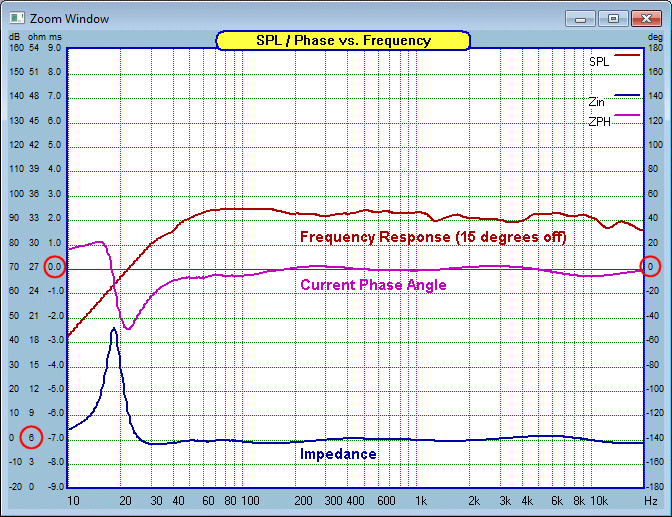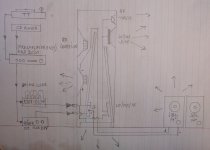I've no doubt they sound very nice, particularly if the music is not too complex, but not what I'd call accurate.
Hmm, have you ever heard it? I have a completely different experience. It actually shows its accuracy when more complexed music is played, although it depends on bias setting and speaker efficiency. I have never heard that accurate transient with any other amps.
So the question is which particular speakers or drivers would need low damping for accuracy?
Yeah, sadly, most speakers currently on the market are designed for high damping amps. (but it does not mean low damping amps are inaccurate...)
Yeah, sadly, most speakers currently on the market are designed for high damping amps. (but it does not mean low damping amps are inaccurate...)
That is exactly the fluffy, non-committal non-answer I expected.
No I haven't, but amps with high HD2 usually sound euphonic with simple music but with complex music can sound muddled.Hmm, have you ever heard it? I have a completely different experience. It actually shows its accuracy when more complexed music is played, although it depends on bias setting and speaker efficiency. I have never heard that accurate transient with any other amps.
That is exactly the fluffy, non-committal non-answer I expected.
We DIYers are supposed to DIY what is not on the market, aren't we?
We DIYers are supposed to DIY what is not on the market, aren't we?
After the non-answer comes the weaseling as per usual.
Go on name a bass driver that needs low damping if you can because neither you nor me are going to diy a driver.
No I haven't, but amps with high HD2 usually sound euphonic with simple music but with complex music can sound muddled.
H2 is high only amp is pushed hard. Wish high efficient speakers, H2 effect is very minor.
After the non-answer comes the weaseling as per usual.
Go on name a bass driver that needs low damping if you can because neither you nor me are going to diy a driver.
I wish I can make a field coil woofer.
It depends what you call high or pushed hard or efficientWith an accurate amp none of these things would be an issue
It is true that small amps are accurate in very limited context, but it can be more accurate in that context than larger amps.
... but I've not come across any at all that sound more accurate...
Not an unlikely situation given that probably 99.99% of speakers take kittle or no car eto have flat impedance because they have assumed a near zero output impedance.
dave
We DIYers are supposed to DIY what is not on the market, aren't we?
+1
Go on name a bass driver that needs low damping if you can because neither you nor me are going to diy a driver.
High output impedance amps are not usually happy with any speaker that has a big resonant hump. You want flat impedance. So few speakers extant, but that still leaves use when multiamping and the driver has flat impedance over its passband. Used in situation slike this, no back EMF getting into the amplifier, freedome from power compression, and that a VC based loudspeaker is by its nature a current device (and a voltage amp uses the speakers impedance as the R in the I/V convertor), can have sonic benefits.
Tha does not mean that such do not exist. Here is the impedance of the Elsinore Mk6. It has 4 bass drivers.

Essentially one gets the same measured frequency response independednt of amplifier output impedance and i get the sense Joe now prefers using a current amplifier.
As well one can take the case of some FRs drivers where the balancing of the impedance curve & the higher output impedance work together to extend the FR extremes and create a better sounding system. Horn loaded Fostex FExx6 are a good example.
To expand on the last paragraph, as the output impedance of the amp rises one can imagine a larger & larger portion of the impedance curve is convolved with the FR (as measured with a near zero output impedance amplifier).
dave
Go on name a bass driver that needs low damping if you can because neither you nor me are going to diy a driver.
I can name lots. It's trivial, since we're not thinking just about drivers. Drivers go into cabinets, and the cabinets we design need to take the amp's output impedance into account.
Low damping factor means high output impedance, which in turn means Qes effectively rises.
If I had a low-Q woofer on an open baffle, I might deliberately choose an amp with a high Zout to drive it, which would prop up the bass a bit by effectively increasing the Qts.
I could also use a voltage source with plenty of headroom, and bang a series resistor in there. Maybe the crossover inductors will add the series R that's needed to get the bass where I want it, or maybe I'll use a combination of the above.
To reiterate what Dave (P10) said: amplifiers, speaker cables, crossovers and speakers need to be considered as a complete system when it comes to design.
Chris
Maybe in the old days when amplifier power was limited. It's different now with cheap high power amps, active systems and EQ.amplifiers, speaker cables, crossovers and speakers need to be considered as a complete system when it comes to design.
The link does not open, ask a mod to fix it .....
Problem isn’t the link, but a problem with the helper image server.. Copy the URL and paste it into another window.
dave
Maybe in the old days when amplifier power was limited. It's different now with cheap high power amps, active systems and EQ.
What does high power have to do with it? Especially when some of the best amps in the world are not very big. Quantity does not substitute for lack of quality
dave
Maybe in the old days when amplifier power was limited. It's different now with cheap high power amps, active systems and EQ.
I wonder what is wrong with limited amplifier power in this active crossover age. A low watt amp is still better for a tweeter amp, I guess.
Far too big a generalization. Execution is VERY important.
Every amp has transconductance. One of the most interesting amps i have heard was a variable transconductance amp, with a knob on the front that let one dial in output impedance from near zero to near infinity. Each speaker seemed to have a slightly different optimum setting.
Amp & speaker (and the connection between them) should be looked at as a system.
I agree.
Show me an accurate amp that doesn't have a low output impedance
How do you define accurate? What speakers?
Here is the truth...
Amp A can sound more accurate than amp B when the speaker is an average two way (or average of speakers in Planet10 website). Surprisingly, amp B becomes much more accurate than amp A when the speaker is three way with very low LF extension...
If you compare amp A plus the small speaker versus amp B plus the wideband speaker, which one is more accurate? I think Scott is right.
Probably the only way to utilize such amps is in multi amp systems, with extra complexity/difficulty due to different amps used. Sounds logical but I haven't seen a good example.
... quantity and quality are not mutually exclusive
Of course they aren’t.
dave
Problem isn’t the link, but a problem with the helper image server.. Copy the URL and paste it into another window.
dave
Thanks Dave !
I rehearsed this and the sound was fantastic!Probably the only way to utilize such amps is in multi amp systems, with extra complexity/difficulty due to different amps used. Sounds logical but I haven't seen a good example.
 Bi-amplification achieves what a hyperdeveloped passive crossing and their respective speakers for much less cost and more versatility. IMHO....
Bi-amplification achieves what a hyperdeveloped passive crossing and their respective speakers for much less cost and more versatility. IMHO....Attachments
- Status
- This old topic is closed. If you want to reopen this topic, contact a moderator using the "Report Post" button.
- Home
- Member Areas
- The Lounge
- I think I've condensed in only 4 Laws the guideline for the best-in-class audio chain
